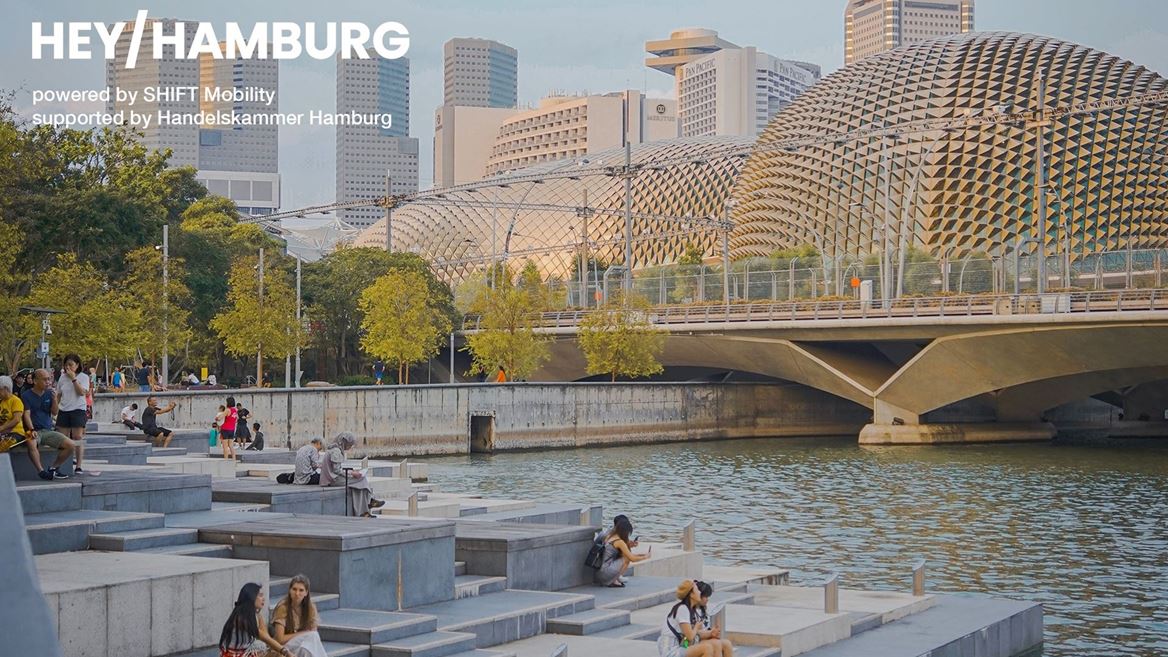Love City instead of Smart City: The change in values is in full swing

The vision of a high-tech city. From traffic flows to energy supply: Metropolises around the world are working to deploy digital technologies to advance progress in crucial future fields. Urban planning and high-tech – an innovation-driven combination that will win over people’s hearts. Or will it?
The study “MIND-SHIFT: A Compendium on Future Mobility, Circularity and New Urbanism” initiated by SHIFT Mobility and pressrelations arrives at different conclusions. Judging by the media response, the livable city paradigm has almost caught up with the future concept of the smart city that has dominated until now. In other words, people do not want a “cold” high-tech city. So what constitutes a “love city” instead?
Diverse, inclusive, climate-resilient, green and traffic-calmed, with short distances and a high quality of neighborhoods – that is what a “Love City” should be. Danish architect and urban planner Jan Gehl, who has also taught at the Royal Danish Academy of Art, put it this way: “A sustainable city is above all a people-friendly city.” True to this maxim, Gehl’s visions for urban infrastructure pursued the goal of improving people’s quality of life for many years, which put him ahead of his time. In particular, his work focused on the needs of pedestrians, cyclists, senior citizens and families. Probably his best-known “work” was making Copenhagen the most bicycle-friendly city in the world.
What is happening now is proving visionary Jan Gehl right. In 2021, Handelsblatt wrote: “The city of the future is ecological sustainability, to offer a high quality of life in every neighborhood.” Conversely, this means that if it fails to offer that, city dwellers will move away to places where they can satisfy their longing for nature. Out into the country, or into the suburbs – there, where the world is still “in order”. Star architect Kengo Kuma, who shares this opinion, also writes in Handelsblatt that “we are leaving the cities and going back to nature because life in the metropolises doesn’t make us happy.”
The fact is that the urban exodus has been picking up speed for a few years already. In 2014, net migration in Germany’s seven largest cities showed a downturn for the first time in 20 years. Even the megacity of New York lost 5 percent of its inhabitants to the surrounding area in the first year of the Covid outbreak. The keyword here is “pandemic”, and people have increasingly used this time to question their life and career model critically and to look for hybrid ways of working for themselves. The maxim of ‘Live where the work is’, which has been trusted for decades, has had its day. Not only that: It’s accelerating the trend toward urban outflow, which, according to a current study by our partner this year, the ZIA (Zentraler Immobilien-Ausschuss), will outlast Covid. More space, more peace and quiet, more affordable living space, more greenery – a combination that is appreciated by more and more people.
What can cities do to turn this trend around? The answer is as simple as it is challenging: Metropolises must (once again) become habitats worth living in. Sebastian Gallander, Harvard graduate and lecturer at the Hertie School of Government, puts it this way: “We must bring the village back into the city”. A start has been made – among others, with the “15-minute city” in Paris, the superblocks of Barcelona, gender mainstreaming in Vienna, and the “low-traffic neighborhoods” in the UK. By 2030, there should be city centers in Copenhagen, Hanover and Amsterdam that are free of cars.
The decisive lesson to be learned here is: Smart City and Love City must be more closely bound together in the future. Smart cities, packed with data and sensors of all kinds, can, for example, contribute significantly to better traffic management and – as is already done in Hamburg – give priority to cyclists. When it comes to climate resilience, data-driven systems can also deliver significant added value, since air quality, rainfall and temperature measurements could trigger automated measures against pollution and extreme weather. One concrete example: road surfaces controlled by apps absorb rain, then release it again during hot spells. In light of oncoming climate change, the challenge of overheating in particular should not be underestimated here. It is Athens, not without reason, that has Europe’s first Chief Heat Officer in Eleni Myrivili, and Vienna is planning a district cooling network.
To sum it up: Smart cities can also become love cities – if digital measures meet demands that are true everywhere and, at the same time, the real (new) needs of the people living in them. Or, as Jan Gehl would say: “A city is worth living in when it respects the human scale.”
HEY/HAMBURG
powered by SHIFT Mobility
supported by Handelskammer Hamburg





